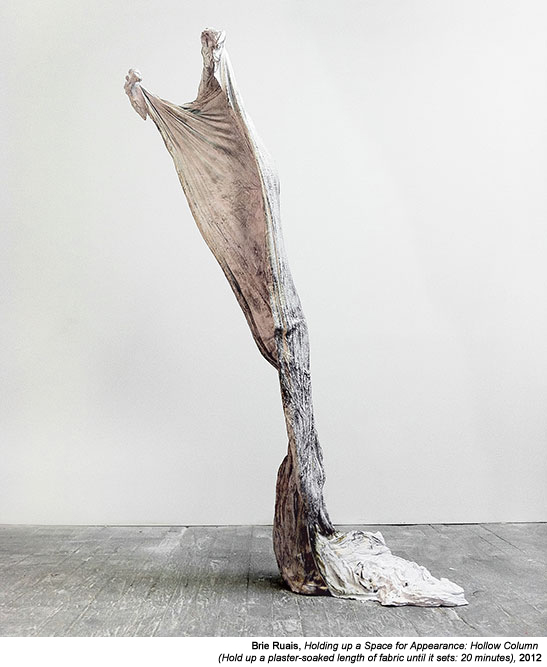OPENING FRIDAY OCTOBER 11th, 7 – 9PM
REVERSE is pleased to present “Ajar” a group exhibition featuring works by A.K. Burns, Lea Cetera, Kerry Downey and Joanna J. Seitz, Brie Ruais, and Julia Sherman. Curated by Natasha Marie Llorens,“Ajar” will run from Friday, October 11th to Sunday, November 3rd.
“Ajar” is a feminist sculpture exhibition because its objects work to hold opposite meanings together in form, without resolving them. They are objects left ajar. They hold tension-in-material as opposed to truth-in-material. The body, in these works, is a location for contradiction, rather than the coherent expression of identity. These are objects that avow a collective anxiety about the body and about the composition of desire.
A.K. Burns’ series of small concrete geometric shapes are cast from cardboard molds. They bear faint traces of corrugation. Smooth orifices are bored into each surface. These are wide enough to admit several fingers, perhaps a small hand. Like industrial, neo-minimalist sea-shells, they beckon the viewer to press an ear to them. They are forms that beg to be listened to. Burns will collaborate with Kamau Patton to perform the white noise produced by their hollow-ness, to pass sound through these unlikely bodies.
Lea Cetera’s sculptures and video installation draw on the phenomenon of furry fandom. “Furries” are people who dress up in anthropomorphic costumes – as wolves or unicorns or cartoon teddy bears. Cetera’s video includes footage from online tutorials about how to make anamatronic furry-costumes, and her objects for “Ajar” are made according to their prescription. Cetera’s objects engage with Furry-culture’s play on structures of recognition, voyeurism, and investment in fantastical or liminal experiences.
Kerry Downey and Joanna J. Seitz collaborate with Pedro Osorio to produce a video shot in a luxury hotel suite. Hotels are spaces that are left perpetually ajar, traversed by transience. Their objects echo with undertones: intimacy, solitude, synthetic domesticity, a homogenuous sort of luxury. Anyone can be home here, they reassure the traveler. Difference exists for those who cannot afford a “King Suite,” the room’s objects murmur. Osorio picks things up, testing their anonymity. With his body, he tries to find all the crevices where the room’s surfaces do not quite meet.
Brie Ruais soaks material in plaster and holds it aloft with her body (or with another body) until the plaster sets. A sheet, the essential building block for a makeshift tent, is thus transformed into a neo-classical sculpture. Ruais was fascinated by the mechanisms of division she witnessed during the Occupy movement, the various ways space was made where private actions–sleeping, reading, dancing–could be performed in public. Her sculuptures are, in part, monuments to how intolerable the private body was to that public space.
Julia Sherman presents two x-ray images of John Singer Sargent’s infamous portrait of the Madame Gautreau, Portrait of Madame X (1884). Madame Gautreau was a young expatriate socialite married to a banker. The first version of the painting, whose reception in Paris was disastrous, showed the strap of Madame Gautreau’s dress falling off the shoulder. Sargent overpainted this detail later to show a strap more securely fastened, which is how the portrait is shown today. Sherman re-presents x-rays marked with faint traces of the original strap imbedded in the canvas, just beneath our view.
Exhibition website: objectsajar.net

 Share on Twitter
Share on Twitter Share on Facebook
Share on Facebook